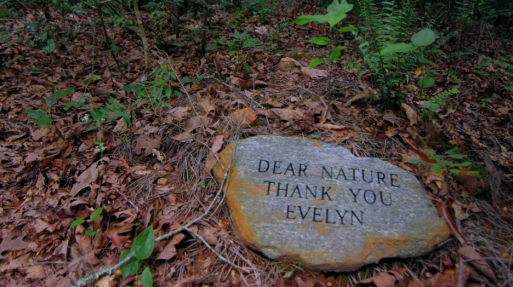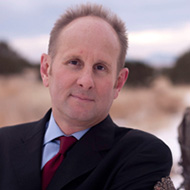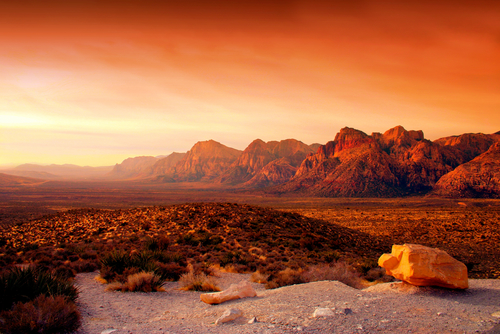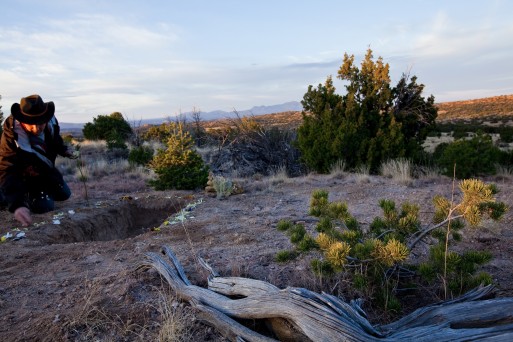Today SevenPonds speaks with Joe Sehee an advocate for social justice based in Melbourne, Australia. As a Jesuit minister, Joe and his wife Juliette, began their journey by working for an environmental planning firm. About a decade ago, they decided to open a retreat to inspire spiritual healing through nature — this idea ultimately led to the foundation of the Green Burial Council in 2005. He has since stepped down to focus on the preservation of conservation land trusts by incorporating beautiful natural burial sites through a service he recently founded “Conservation Burial.“
Suzette: What was it that led you to your passion for conservation land trusts?
Joe: Moving to Joshua Tree was like being on an extended camping trip. You can’t help but be moved by a landscape. Out of that connection with nature, which I had never before experienced on that level, came a desire to ensure that others have the same opportunity. That led to our coming up with creative strategies to allow this part of the Mojave to remain intact, which eventually made us consider green burial as a potential conservation vehicle.
Suzette: So this was your idea?
Joe: No, I was one of a number of people, I would later discover, who had contemplated the idea of integrating end-of-life rituals with the preservation of land including Billy Campbell, who became a great mentor of mine. At the time, I remember thinking that this idea seemed too good to be true, or at least too obvious not to have been attempted — particularly given the alarming rate at which we’ve been losing habitat and the growing strain on entities tasked with trying to minimize the impact of development and degradation. I also felt like the idea would resonate with the part of the American public that wanted to find a way to transcend the merchandise-based model of “deathcare.” I guess my big contribution was establishing the first independent nonprofit — the Green Burial Council — to set forth standards and set the stage for linkages between the conservation community and the field of funeral service.
Suzette: Why do we not see more conservation natural burial grounds?
Joe: Financing, or the lack thereof, has probably been the biggest reason. Only a half dozen conservation burial grounds are in existence. Conventional cemeteries have long faced a similar problem, at least in getting backing from traditional lenders who’ve always known that a burial ground is one of the few types of real estate that can’t be foreclosed upon. Compounding this problem is that a typical cemetery takes about a decade before it becomes profitable, which is even more problematic for investors in conservation burial grounds since a lack of comparable metrics has made it difficult for them to know if a return on investment would prove any better.
Suzette: Has the conservation community been big supporters of this idea?
Joe: Many of us who got involved with conservation burial early on were hopeful that funding issues could be countered by support from land trusts and park service agencies. The idea seemed like such a natural fit for organizations involved in the acquisition and stewardship of natural areas. But buy-in from the conservation community has been tepid at best, due mainly to concerns over getting too closely aligned with a subject as emotionally charged as death as well as with the funeral industry.
Suzette: Is conservation really taking place through burial?
Joe: The aggregate amount of land conservation burial under permanent protection has been somewhat small due to the constraints I mentioned. There’s also been an unwillingness or inability on the part of operators of conservation burial grounds to take out additional acreage while still having burial plots available for sale. Some people like to say that the concept could “save a million acres,” but at the current rate and size at which conservation burial grounds are coming on line, that goal would take nearly 10,000 years to reach.
Suzette: OK, so how do we see conservation land trusts with burial grounds gaining more traction in this country?
Joe: I think we need to eliminate the middleman and allow people to take this matter into their own hands.
Suzette: Wow, people taking matters into their own hands. Please describe what you are thinking.
Joe: What might be called “conservation burial 2.0” for lack of a better term would allow individuals/families to create their own private burial grounds on land with conservation value or on acreage situated within at-risk landscapes adjacent to protected natural areas, such as state and national parks. It’s an idea that comes out of a long conversation with the Texas Department of Parks and Wildlife that began back in 2006. The agency, one of the nation’s most innovative of its kind, was intrigued by the possibility of using burial/scattering as a means of connecting the public to the cause of conservation. They also needed to find new ways of raising money for conservation since they no longer had the budget to purchase additional parkland.
Suzette: So is Texas Parks and Wildlife going through with a conservation burial location?
Joe: Well, after many rounds of discussions with key staffers, commissioners and attorneys, those of us at the center of this exploration came to realize that we might be trying to force a “square peg in a round hole.” Rather than continuing to bump up against issues, such as whether it was appropriate to create ritual space in a park or what if any kind of memorial features might be accommodated, we came to realize it was far easier to find people who would be willing to purchase land bordering their parks. Then after retaining limited interment rights, they would eventually donate their rights back to the park for long-term stewardship.

Joe Sehee had a role in the film “A Will For The Woods” about the green burial movement
(credit: “A Will For the Woods”)
Suzette: So this is a radical new approach then?
Joe: It’s essentially a more ecologically beneficial iteration of the long-held American tradition of “burial on the back forty.” It has an added value for participating families of being able to have a ceremony within a charismatic landscape, some significant tax benefits and usually the possibility for donor acknowledgement/memorialization.
Suzette: What is the “burial on the back forty”?
Joe: It’s just burial on an unused tract of land on a farm or ranch and it’s been quite common in rural communities. Today, most counties still allow for burial on private property of at least five acres.
Suzette: All of this sounds very exciting. So if I have land in the US I wanted to set up as a conservation land trust with a green burial, how do I start?
Joe: Many dots need to get connected in order to make this a viable option. Which is why I’ve recently assembled a team of uniquely skilled professionals (found at conservationburial.com). We’ll assist with everything from identifying suitable parcels based upon one’s financial circumstances, geographic preference and affinity for a particular landscape to effectively engaging financial advisors, family members and funeral service providers, as well as governmental agencies. There’s no shortage of at-risk landscapes in need of stewardship and probably never will be. What we need are people willing to come forward to explore this option.
Aurora: What is the difference between “conservation burial” and green burial?
Joe: Green burial, or natural burial, is the term we use to describe funeral service that helps conserve energy and natural resources and reduces the use of toxic chemicals. The GBC coined the term conservation burial at the Land Trust Alliance National Rally in 2005. We did this so the American public could understand there really is a way to use burial to facilitate landscape-level conservation land and ecological restoration. Conservation burial, as we’ve defined it, requires the involvement of an independent steward like a land trust, which oversees a conservation easement and performs ongoing monitoring and reporting. We believe that burial has much potential to be a market-based conservation tool, but only if it’s done the right way. And despite what some may think, conservation, restoration and stewardship do take money.
Aurora: What is the Green Burial Council’s position on cremation?
Joe: We think that every mode of disposition should be an option within green burial. While there are those who believe cremation should not be allowed to be part of the green burial movement, we think it’s important to remember that many people have religious and/or economic circumstances requiring its use. Rather than guilt tripping consumers into avoiding cremation, we’d rather support ways to make the process more ecologically sound. One way is for consumers to chose a scattering program like the one we’ve been developing with the Texas Department of Parks And Wildlife, which is intended to raise money towards acquiring and protecting at-risk landscapes.
A few years ago, we hired an environmental planning firm to help us establish a carbon offset program for cremation and discovered that it only takes about a $4 contribution to a carbon fund to offset the C02 from the typical cremation. That amount may seem high to some, but to others it seems insignificant compared to all the energy associated with driving our cars and heating and cooling our homes. One of the funeral homes in our network of approved providers, The People’s Memorial Society of Seattle, makes a $4 contribution to a carbon fund for every cremation they do — and they’ve told us this gesture is really appreciated by families.
Aurora: I’m aware that it’s a complex issue — but in general, which is more sustainable: green burial or cremation?
Joe: There’s probably nothing better for the planet than placing a body in the ground, simply and naturally. There have been several attempts to compare the environmental impacts of cremation versus burial and almost all the studies suggest that it really depends on the kinds of questions being asked. For example, if you just look at the process of cremation and the amount of CO2 coming out of the retort, cremation may not look so green. But if you count car trips for a service at a cemetery or for future visits, cremation appears much less energy intensive.
Aurora: How do you feel about recycling the heat from cremation, as one Swedish town has begun to do? Is that a significant reduction of waste? Are there other ways to minimize the environmental impact of death?
Joe: That’s exactly the kind of idea that the GBC supports. When it comes to minimizing the environmental impacts of death, what consumers need to understand is that there are many ways to do this — often, there are tradeoffs. For example, some people may want to use coffins that are made from timber that comes from sustainably harvested forests because they care about protecting natural habitat. Others may be okay with any timber, as long as it doesn’t come from overseas because of the additional embodied energy. And what may matter most to others is making sure the burial container does not contain toxic chemicals because they value worker health, regardless of where the product is manufactured. This is a sensitive, often complex, subject matter. Increasingly, the GBC is trying to come forth with better information so consumers can make better decisions.
Aurora: What is your advice to SevenPonds readers who may be weighing disposition options for themselves or a loved one?
Joe: I would give the same piece of advice I gave to my own family after the death of my father last week, which is: “give yourself permission to do what you feel is right and don’t let anyone dictate how you can best honor the dead, heal the living, and invite in the divine.” My sister had been bothered by a comment a priest made about how the preference of the Church was that the body be physically present at the funeral mass. Interestingly enough, it was a funeral director who helped convince my sister that it was okay if only my dad’s ashes were at the church for the service. I hated that she had to experience that angst, but my sister is the kind of person who likes to follow rules. One of the cool things about green burial is that while the GBC may set standards, there really are no rules. Green burial allows people to take greater control of their end-of-life rituals and gives them the freedom to do things a little differently. In fact, that may be its greatest gift.

 How Can We Integrate Green Burial With A Conservation Land Trust? An Interview with Joe Sehee
How Can We Integrate Green Burial With A Conservation Land Trust? An Interview with Joe Sehee





 “Help Me, Helen”
“Help Me, Helen”
 Recovering Cremation Remains After the Los Angeles Fires
Recovering Cremation Remains After the Los Angeles Fires
 “As Tears Go By” by Marianne Faithfull
“As Tears Go By” by Marianne Faithfull














